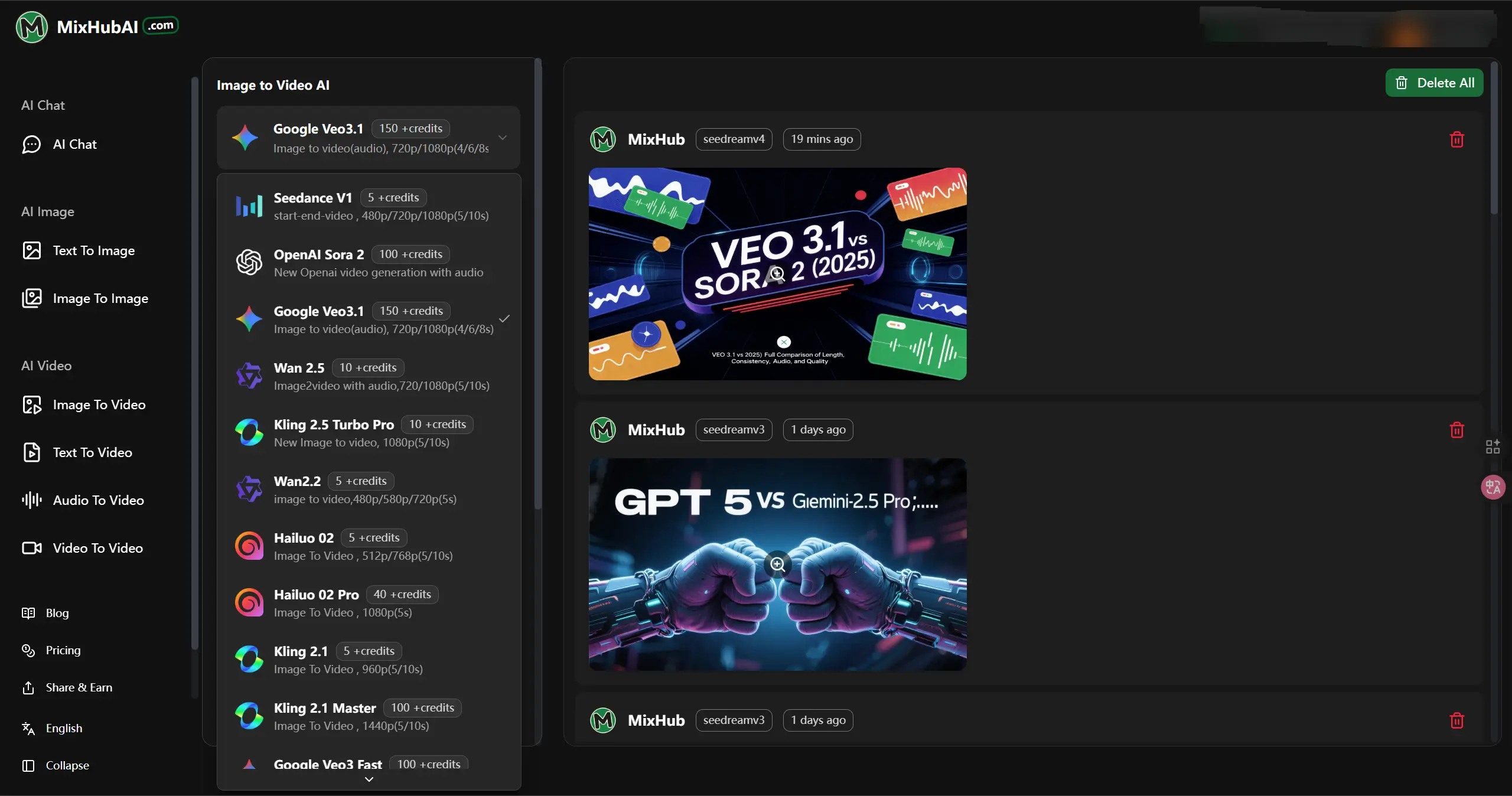Veo 3.1 vs Sora 2: The Next Stage of AI Filmmaking
Discover how Google’s Veo 3.1 and OpenAI’s Sora 2 redefine AI filmmaking. Compare control, realism, audio, and storytelling in this deep dive into the future of cinematic creation.
Artificial Intelligence video tools are entering the director’s era, where camera logic, lighting, and even sound follow your creative intent. The two front-runners leading this cinematic revolution are Google Veo 3.1 and OpenAI Sora 2.

The discussion around Veo 3.1 vs Sora 2 isn’t just about which looks better — it’s about how AI understands storytelling.
🎬 Veo 3.1 — Google’s Precision “Multimodal Director”
Veo 3.1, developed by Google DeepMind, is built to turn text and images into lifelike 8-second 1080p or 720p clips at 24FPS — all with integrated audio. It’s available via Gemini API, Vertex AI, and Flow, offering an end-to-end generation pipeline for creators and developers.
What makes Veo 3.1 special
- Reference control: Accepts up to three reference images to maintain consistent faces, colors, and environments.
- First/last frame interpolation: Smoothly transitions between specified starting and ending frames.
- Native audio: Generates synchronized sound, dialogue, and ambiance automatically.
- Built-in watermarking: SynthID ensures content attribution and creative protection.
In my testing, when generating a cinematic walk through a neon-lit street with multiple reference images, Veo 3.1 maintained perfect continuity of lighting, outfit, and background depth — something earlier models often lost mid-sequence.
👉 See it for yourself:
Best for:
- Short-form narrative creators needing continuity
- Advertising teams needing precise control over brand visuals
- Educators or video designers who want ready-to-use audio + video generations
🎧 Sora 2 — OpenAI’s Realism and Physics Pioneer
Where Veo 3.1 is all control and precision, Sora 2 is all about realism, physics, and emotional authenticity. It doesn’t just render scenes — it simulates how the physical world behaves with dynamic lighting, motion accuracy, and synchronous sound.
Key strengths
- Physics-based realism: Characters interact with gravity, texture, and force naturally.
- Audio synchronicity: Dialogue, ambient tones, and movement sounds are perfectly timed to visuals.
- Transparency and safety: Includes C2PA provenance metadata and visible watermarking.
- Integrated sharing: Exclusively available within the Sora app — think of it as an AI-powered storytelling network.
I tested a “walk through a rainy alley” prompt with Sora 2, and it generated not only realistic raindrop physics but also footsteps and splashes with atmospheric reflections. The realism even outperformed some manual post-edits I had done with other tools before.
👉 Experience cinematic realism firsthand:
Best for:
- Filmmakers prioritizing realism and sound coherence
- Social creators sharing directly in Sora app
- Artists experimenting with physics-based storytelling
⚔️ Veo 3.1 vs Sora 2: The Real Distinction
Comparing Veo 3.1 vs Sora 2 is like comparing two directors with different creative philosophies.
- Control vs. Feel: Veo 3.1 gives you control — every frame, every transition. Sora 2 gives you emotion — fluid, physical, organic motion.
- Access: Veo 3.1 is widely available through open APIs. Sora 2 is currently invite-only via the Sora app.
- Audio: Both have native sound, but Sora 2’s synchronized speech and ambient sound feel more alive, while Veo 3.1’s integrated flow simplifies production.
- Continuity: Veo 3.1 wins in multi-shot consistency through its reference and extension tools.
- Transparency: Veo uses SynthID; Sora employs watermarking with verifiable provenance metadata.
💡 Choosing the Right Model for You
1. For short-form creative stories (≤10 seconds)
Veo 3.1 gives you tighter control and reference options.
Sora 2 offers smoother realism in motion and physics.
2. For audio and dialogue-rich storytelling
Both handle audio natively. Choose Veo 3.1 for efficiency, or Sora 2 for emotional nuance.
3. For longer, connected sequences
Veo 3.1’s extension feature is more explicit and controllable across clips.
Sora 2 relies more on stitching in post-production.
4. For brand safety and attribution
Veo 3.1’s SynthID watermark ensures ownership.
Sora 2’s provenance stack ensures ethical transparency and consent.
5. For access and integration
Veo 3.1 is public via Gemini API and Vertex AI.
Sora 2 is still under invite-only rollout — limited but premium.
🏁 Final Thoughts — The Dual Directors of AI Cinema
We’re entering an age of AI filmmakers — one that merges technical precision and emotional authenticity.
- Veo 3.1 is the meticulous director — structured, efficient, and visually consistent.
- Sora 2 is the emotional storyteller — cinematic, dynamic, and deeply atmospheric.
The future of AI video isn’t “Veo vs Sora.” It’s Veo + Sora, a collaboration of structure and soul.
👉 Try both today at MixHub AI to find your perfect match:
Your next short film might just be co-directed by two AIs.

